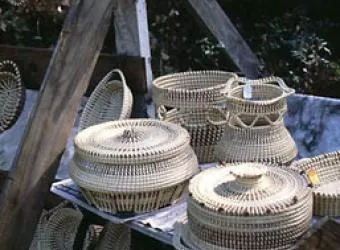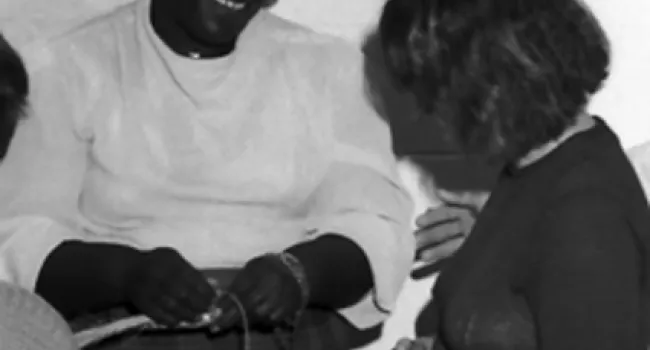
Video
Nancy Basket discusses the importance of the pine needle.
Basketmaking in South Carolina reflects the blending of Native American, European and African traditions to create two predominate types of baskets - the coiled baskets of the Lowcountry and woven baskets of the Piedmont and Blue Ridge. Native Americans used river cane to plait baskets, mats and fish traps. Europeans maintained Old World techniques and forms, adapting them to new materials like white oak to weave their harvest baskets and clothes hampers. On the coast, enslaved Africans brought their knowledge of rice production and introduced coiled basketry using local sweetgrass, bulrush, palmetto, and pine needles. Today, traditional basketmakers have adapted their forms to a changing market and most baskets are made for decorative use.
Content is provided by McKissick Museum, University of South Carolina.
For further information about any of the artists featured on Digital Traditions, send your questions and comments to hallagan@mailbox.sc.edu.

Video
Nancy Basket discusses the importance of the pine needle.
Audio
Franklyn De Loach shares how the baskets were used according to their sizes.
Audio
Marie Manigault talks about how her great-grandmother passed down her basketmaking skiils.
Audio
Mary Vanderhorst talks about how she learned basket making as a child.
Audio
Interviewed by Dale Rosengarten In this interview, Barbara McCormick talks about the places she goes to find the materials she uses to make baskets
Audio
Sue Middleton explained that men would help their wives make baskets.
Audio
Leroy Browne talks about the necessity of basketmaking.
Audio
Maggie Manigault talk about other people who sew.
Audio
Nathaniel Washington talks about different parts of tree.